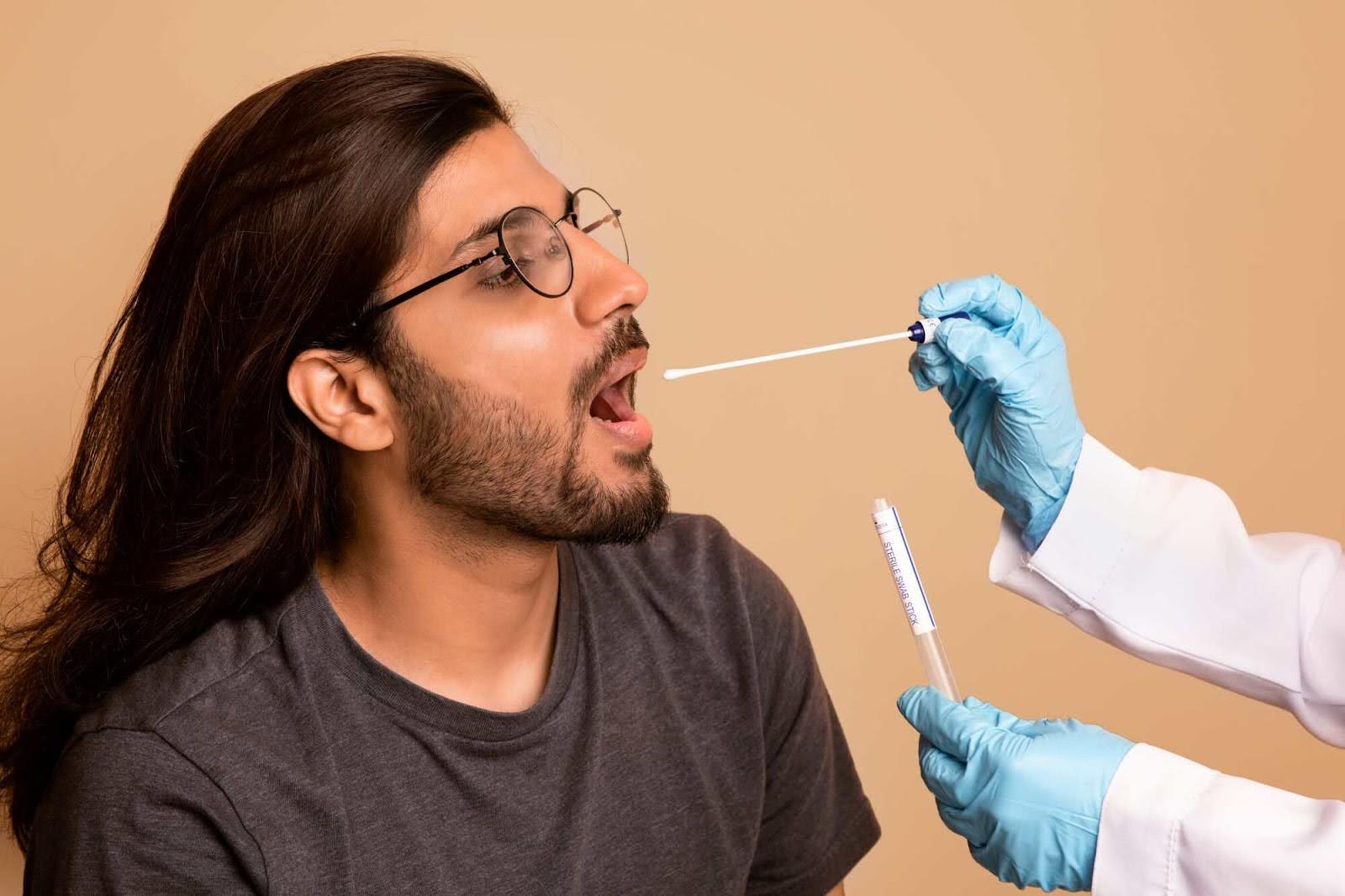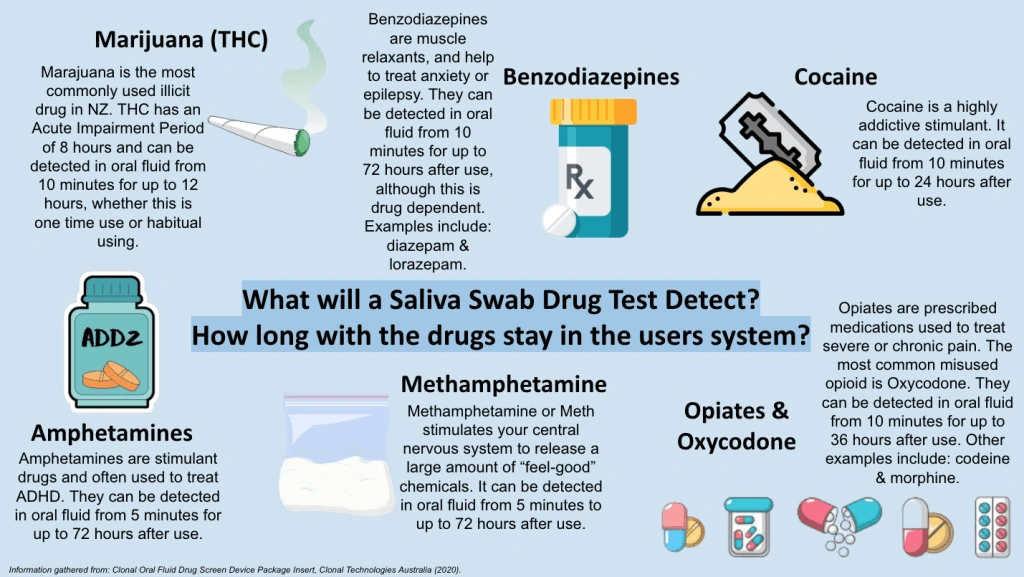
Let’s Cut to the Chase
Have you ever found yourself at a backyard barbeque, sipping something cold, half-listening to your friends’ stories… and suddenly your brain whispers: “wait, could this show up on a drug test?” No, just me? If you’ve ever sweated over a pre-employment screening or had that tickle of worry before a wellness check-in, you’re not alone. Life just… happens—and sometimes, so do surprise saliva tests.
I’ve been there (awkward pause—more than once). So let’s talk honestly about Labcorp saliva drug test detection times: what actually happens when that mouth swab comes out? How long do “traces” really stick around? And why is it always the day after a big weekend?
Swabs, Speed, and Surprise
How Saliva Testing Sneaks Up on You
Saliva tests are like those ninja health checks; they show up quick, don’t require you to pee in a cup, and feel way less dramatic than blood draws. Honestly, sometimes I wish all health tests were this simple—just a swab inside your cheek and you’re done. Boom. But because they’re so fast and convenient, workplaces use them more now than ever for pre-employment, accident checks, or randomly just to keep everyone safe and honest.
But here’s the thing: unlike hair (which is basically a personal timeline), saliva only tells a short story. It doesn’t rat you out for weeks… but it is super good at catching what’s “new.” This is why understanding Labcorp saliva drug test detection times will give you an actual edge—not just a random number to worry about. In fact, it’s the little details that matter, so let’s dig in and keep it human.
The Honest Window (And Why Timing Actually Matters)
So… How Long?
I get it—you want the numbers, not more small talk. Here’s what Labcorp says: most drugs can be spotted in your saliva within the first hour after use. Yep, things move that fast. Then, depending on the substance, Labcorp saliva drug test detection times usually stretch somewhere from 5 to 48 hours after your last encounter with whatever you’re worried about. According to Labcorp’s FAQs, “a drug may be detected in oral fluid in less than one hour and remain detectable for five up to 48 hours after last use.”
Easy table time—because sometimes a quick glance explains more than 10 paragraphs:
| Test Type | Detection Window | What It’s Good For |
|---|---|---|
| Saliva (Labcorp) | 5-48 hours | Recent use (last 2 days) |
| Urine | 1-7 days | Past week’s choices |
| Hair | Up to 90 days | Deep-dive history |
Don’t believe me? Scope out the science via Labcorp’s detection FAQs or, if you want to get nerdy, Oral fluid drug test detection times break it down beautifully with more details than you ever knew you needed.
The Substances That Tell On You
Okay, so—what can this test actually spot? Here’s where it gets wild: it’s not just weed or “hard stuff;” Labcorp covers amphetamines, cocaine, opiates, ecstasy… even nicotine (cotinine). Basically, if it’s commonly abused or could impact safety, it’s on the list. According to Labcorp’s oral fluid drug testing guide, the usual suspects all show up.
But here’s the subtle twist: not all drugs hang around the same amount of time, not even close.
| Substance | Detection Window (Saliva) |
|---|---|
| THC (Cannabis, occasional) | 6-24 hours |
| THC (Chronic use) | Up to 72 hours |
| Cocaine | 24-48 hours (can be longer in heavy users) |
| Opiates (Morphine/Codeine) | 24-48 hours |
| Heroin | 5-6 hours (blink and you miss it) |
| Amphetamines | 24-72 hours |
| Benzodiazepines | 2-5 days |
If you want an even deeper rabbit hole, I found Oral fluid drug test detection times extremely helpful (don’t say I didn’t warn you; it gets pretty geeky, but in a good way).
The Human Side: Stories, Oops Moments, and Surprises
So here’s a confession (keep it between us): I had a friend, Jesse, who thought he’d timed everything perfectly before a new job. Weekend was, let’s say, festive? He figured with 48 hours he was golden… but forgot to count the “less than one hour” reality. The test caught tiny traces. No disaster, but a few awkward conversations with HR.
Little moments like that stick with you. It’s the “wait, already?” feeling that comes with these oral swabs—they tell your immediate story, not your past. If you want a full picture of how these timelines stack against urine and hair tests, jump over to Oral fluid drug test detection times—super useful if you want to keep your wellness streak fully intact.
What Else Messes with These Test Windows?
It’s Not (Always) Fair
Here’s where things get fun: your personal biology can totally tip the scale. Your metabolism? If you’re one of those people who burns through calories at warp speed (not me, unfortunately), you’ll clear substances from your saliva a bit faster. If you’re older, or if your liver and kidneys could use a tune-up… well, things might hang around a tad longer.
And yes, eating or drinking right before the test? Big no-no. Labcorp wants you to avoid any food or drink for at least 10 minutes before swabbing. Water, mouthwash, even a breath mint can mess with results. That’s not just rumor; it’s on Labcorp’s FAQ. So… if you’re trying to “trick” the test with a magic rinse, don’t bet your career on it.
Have you ever noticed how your hydration changes everything? I once ran a 10K the morning of a test—sweaty, parched, drank a ton of water, and yep… the results were a bit quirky. Wouldn’t recommend experimenting on test day. Just… keep it boring for a few hours, trust me.
The Test Process—(Almost) No Mystery Left
The Step-by-Step: Mundane but Important
Want to know exactly what to expect? Here’s the play-by-play:
- A collector hands you a tidy-looking swab—no scary needles.
- You place the sponge or pad in your mouth, usually along your cheeks, for just a couple of minutes. (Yes, your mouth might go a little dry and awkward, but power through!)
- The sample goes into a buffer. This keeps it stable until it hits the lab—bacteria can mess with the sample, so the buffer is non-negotiable.
- Labs use high-tech tools like immunoassay and mass spectrometry for the results. Sounds fancy, but it just means “really good at finding tiny amounts.”
- Negative results? You’ll usually know in 24-36 hours. Anything fuzzy or “presumptive positive” might take an extra couple days for full confirmation.
This process is, frankly, a lot less dramatic than you’d think. Unless you’re a nervous talker like me—awkward small talk everywhere—but at least there’s no undressing involved like with some other tests.
Accuracy: No Place to Hide
Worried about false positives? It’s low (think 3-7% for common drugs), but still possible if you’re using unusual mouthwash or random over-the-counter stuff. Research on saliva drug testing accuracy says the best labs (yep, like Labcorp) score about 97-98% accurate when done right. Prescription meds can cause a blip, but a follow-up “confirmation” almost always clears it up.
Saliva Test Life-Hacks (And Kind Reminders)
Treat Your Body (And Mouth) Right
Okay, so what can you do if you know a test is coming—or if you want to keep your oral health in tip-top shape, anyway?
- Time it out: If you know you’ll be tested, aim for a 72-hour substance-free window, especially if it’s something “sticky” like THC.
- Pace yourself: Chronic, frequent use means a longer detection. One-off mistakes clear faster; regular habits, not so much.
- Hydration helps but don’t try to “flush” your saliva; it’s mostly about natural routines.
- Eat clean and practice strong oral hygiene. Not because you’ll cheat the test, but because… well, your mouth deserves it!
- Talk to your doctor if you’re prescribed something that could show up—better a heads-up than a weird follow-up call.
Funny story: A wellness coach I know once did a test to demo “life balance” for a class after a heavy cheat meal and a late-night movie. Nothing illicit—but the test picked up a weird “false” due to OTC allergy meds and sugar overload. Lesson learned… again, honesty and prep go far.
Why This Actually Matters to Your Wellness
Fitness, Health, and Peace of Mind
Honestly? Everybody slips up, or just wants to know how to keep health routines on track. Whether you’re an athlete, an occasional adventurer, or someone who just wants a “clean bill” at work, knowledge is power. Understanding Labcorp saliva drug test detection times isn’t just about avoiding awkward convos—it’s about realistic self-checks and smarter choices.
If you want an even deeper dive into the details—timelines for specific drugs, how medication fits in, or just want to compare panels—visit Oral fluid drug test detection times. I guarantee you’ll learn something new. (Or at least have a new story for the next friend worried about their BBQ habits…)
Wrap-Up: Keeping It Real, Staying Healthy
Phew! If you made it this far, you’re officially more informed than half the HR managers I’ve ever met. But seriously—Labcorp saliva drug test detection times matter because they give you control. You don’t need to stress about ancient history or worry that last Friday’s patio moment will haunt next month’s check-in. It’s a window, not a life sentence. Five to forty-eight hours, with a few quirks for heavy users or slow metabolisms.
My challenge for you: reflect on your rhythms. Use what you know to sync your health, wellness, and maybe even a little peace of mind before that next swab. And if you’re ever feeling overwhelmed? Reach out—friends, doctors, heck, even this blog’s comment section. You’re never alone in figuring this stuff out.
Here’s to making smarter moves, laughing through the awkward moments, and keeping your health journey as real as your next post-run selfie. What’s one health or wellness lesson you’ll put to work after reading this? Share below—I’m genuinely curious, because let’s be honest… we’re all works in progress!


















Leave a Reply
You must be logged in to post a comment.